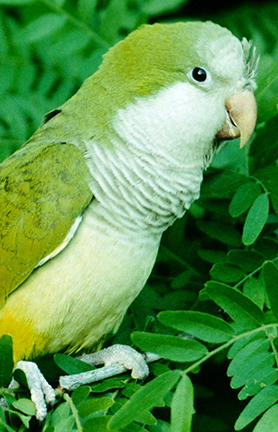
In the wild, Parrots grow up learning from their parents and flock-mates about which plants are safe to eat and which ones are not. A pet Parrot, on the other hand, doesn't know the difference between safe and unsafe plants. In our homes, we might have assorted plants that come from different parts of the world, and not all are safe for a Parrot to nibble on. Safe plants can supply our Parrots with nutritional benefits; however, if a toxic plant is ingested it can cause illness or injury. Often when small amounts of a harmful plant substance has been consumed the body eliminates it, but because Parrots have such a low body weight even the smallest amount ingested can still pose a health risk.
If your Parrot does ingest a toxic plant the most common clinical signs that will be seen would be nasal and/or eye irritation, blistering, swelling in their oral cavity as well as throat, vocal impairment and gastrointestinal distress.
To prevent toxicosis being aware of what plants are 'safe' and 'unsafe' before they are placed in your Parrot's environment is important. In addition, if you use pesticides or herbicides in your own garden, avoid harvesting any treated plants for your Parrot.
If you think your Parrot has ingested a toxic plant call your avian veterinarian, identify what plant was ingested if you can, and try to keep your Parrot warm, comfortable and stress-free.
Below is a list of the MOST common 'safe' and 'unsafe' plants kept in homes.
Common unsafe plants that are kept in homes are:
Avocado
Azalea
Bird of Paradise
Dieffenbachia
Elephant's Ear
English Ivy
Holly
Mistletoe
Nightshades
Oleander
Philodendron
Poinsettia
Rhododendron
Rhubarb
Common safe plants that are kept in homes are:
Aloe
African Violet
Bamboo
Christmas, Easter Cactus
Ferns
Jade Plant
Palms
Spider Plant
Wandering Jew
For a more detailed list of plants that are safe and unsafe for your Parrot go to: http://www.avianweb.com/toxicfoods.html.
